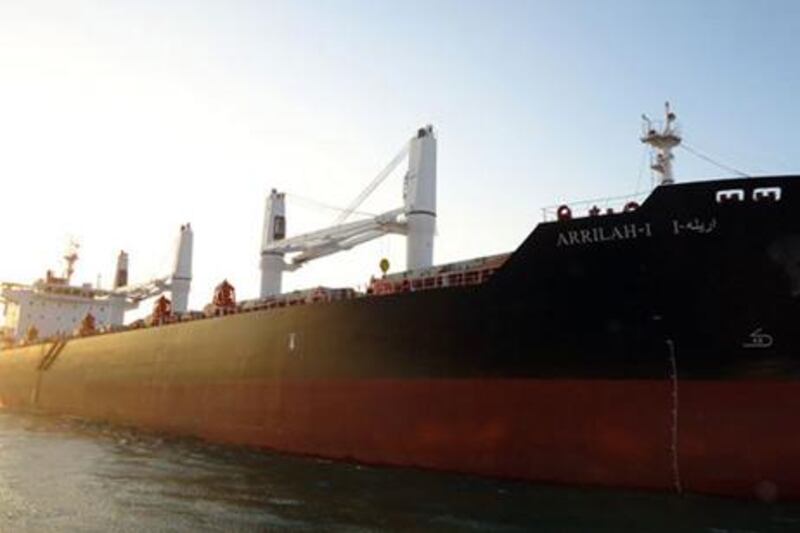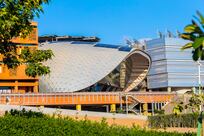DUBAI // The crew of the MV Arrilah-I, who were freed over the weekend after their vessel was hijacked, escaped their attackers by hiding in a specially prepared safe room as pirates repeatedly tried to force them out, it has emerged.
The 21 sailors and three security guards remained secure in the stronghold, known as a citadel, despite the pirates shooting at the entrance and pumping in smoke to cut off their oxygen.
They had breathing apparatuses, food and water and could control the ship and communicate with nearby vessels and aircraft, said Rhynhardt Berrange, the head of Global Maritime Security Solutions, which supplied the guards. He was briefed by his men on Sunday night.
The safe room and other defence precautions, including regular anti-piracy emergency drills, were key to keeping the crew safe until UAE and US forces stormed the ship on Saturday.
“They continually tried to breach the citadel,” Mr Berrange said yesterday. “The successful resolution of this incident demonstrates the importance of adopting best management practices. Safety standards must be in place for dealing with all emergency situations.”
The trouble began on Friday morning as the 37,000-bulk carrier owned by a subsidiary of the Abu Dhabi National Oil Company was travelling in the Arabian Sea. It had nearly completed its return trip from Australia to Jebel Ali, lasting about two weeks, and was carrying cargo, causing it to ride low in the water and making it easier for pirates to access the ship.
Around 9am UAE time, the men on board spotted a suspicious vessel. Soon after, two skiffs carrying nine men sped toward the MV Arrilah-I. The attackers began firing as soon as they came into range, said Mr Berrange. "They shot at anything that moved," he said.
The crew sprang into action, following protocols practised several times during their journey. One security guard popped into and out of sight, drawing fire towards himself to create a diversion while the others completed their assigned tasks to lock down the ship and retreat to the safe room.
The crew and guards on duty stayed outside the safe room, watching as the skiffs feigned a move and disappeared, Mr Berrange said.
Soon after, they noticed the first pirate boarding – at a point where no boarding has been known to take place. The men withdrew to the safe room. They continued to navigate the ship towards UAE waters with a coalition aircraft guiding them from nearby.
The men tried to maintain contact with the coalition forces in the vicinity. The location of the citadel, however, made communications difficult.
Around midnight the first naval vessel arrived, a US warship equipped with a Black Hawk helicopter. Two other vessels under the command of the US Navy Fifth Fleet based in Bahrain were in the vicinity to provide support, said the Navy spokeswoman Cdr Amy Derrick-Frost.
UAE forces followed early on Saturday. They communicated with the crew to assess whether they should try to retake control of the ship based on international guidelines.
The key criteria in such situations are that the crew are safe and separated from the pirates, that they have communication with the naval forces and that they are able to control the movement of the ship, said Cdr Stein Olav Hagalid, a Nato representative.
The rescue mission was quickly accomplished, Mr Berrange said, praising UAE special forces. He declined to elaborate to avoid revealing information that could risk future operations.
The ship was scheduled to return to Jebel Ali port last night. The pirates were to be handed to the Ministry of Interior and will be prosecuted in Federal courts.
[ chuang@thenational.ae ]






